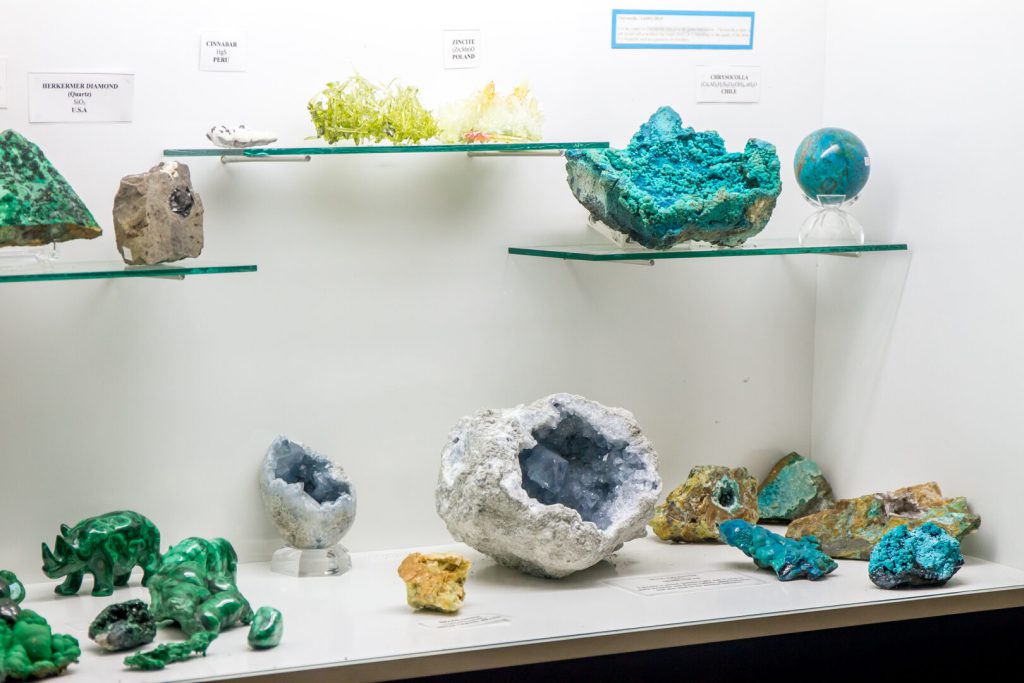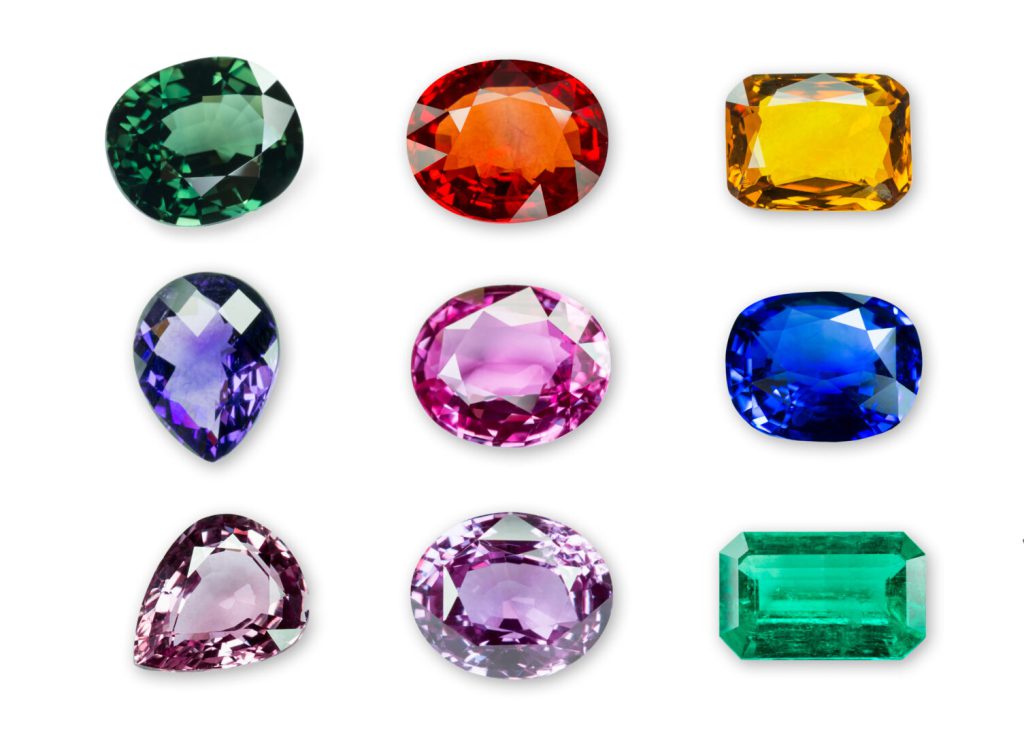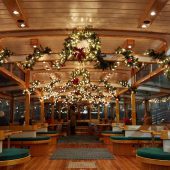The American Natural History Museum’s New Hall of Gems and Minerals has been an important fixture in the museum’s history. It was first opened in the 1970s but has since been redesigned to unveil a splendid collection of precious stones and mineral specimens. This reopening of the Hall of Gems and Minerals is to celebrate the AMNH’s 150th anniversary in New York City.
Officially known as The Allison and Roberto Mignone Halls of Gems and Minerals, it tells the history of how humans used these specimens as jewelry and to invent tools for early technological usage. They decorate the museums which now feature interactive displays and informative media for each exhibit.
If you plan on visiting this world cultural center, then here’s what you need to know and what to expect at the renewed hall:
Minerals
A stunning array of mineral specimens is on show within the glittering Hall of Gems and Minerals. These rock formations are products of mineral deposits and cooling magma hardening into rock beds over millions of years on our planet. As you walk through the exhibit, you’ll notice the changing color tones and layers of rock on each mineral specimen.
You can expect a huge geode measuring 9 feet tall and made of sparkling purple amethyst to greet and dazzle you when you enter. It’s flanked by its taller cousin that resembles the shape of a cocoon as the rock wraps around the purple amethyst embedded inside it. Both geodes are some of the largest rock minerals on display in any museum in the world. They’re both discovered and imported from Uruguay to feature as the crown jewels at the entrance of the exhibit.
The other mineral types you can anticipate seeing are towering and intact crystal rock specimens such as the looming Behemoth Beryl. This 5-foot crystal rock found in the state of Maine contains the rare mineral beryllium created by crystalizing igneous rock intrusions. Be sure to check out the Luminous Labradorite column made out of large crystals ingrained into its block of igneous rock.

Gems
The vast collection of sparkling gems on exhibit at the Hall of Gems and Minerals is a treasure trove of jewels that are enough to leave you open-mouthed as you observe them. Sapphires, rubies, emeralds, and tourmalines are among the many types of precious stones you can expect to shimmer on view. No wonder it makes for a popular child-friendly activity to do in New York.
One of the most eye-catching gems on exhibit is a sapphire known as The Star of India. It’s high gem quality, a gradient of blue white and purple color with distinct star patterns etched over the entire stone, which makes it a unique and iridescent item of jewelry. Rough sapphires mined from Sri Lanka feel like they have a changing spectrum of colors that range from pink to orange and ruby as you turn your head to marvel at them.
You’ll want to take some time to have a look at the impressive emerald on display called The Patricia Emerald mined from Colombia. This elegant and brilliant green crystal rock is made up of a whopping 632 carats and is renowned for staying preserved in its large original state and never broken down into smaller pieces.

Specialty Exhibitions
In addition to the mineral and gems on exhibit within the hall presents arts arranged and placed on pedestals to show off their ultra-uniqueness. This is where irreplaceable and one-of-a-kind diamonds define the special gallery as a spectacle of beauty and luxury.
There’s the Butterfly of Peace display made up of 240 diamonds from every diamond type ever found on earth, formed in a butterfly shape. They also act as a record of the variety of colors that these stones have been discovered in. It has taken about 12 years to construct this diamond art piece that has a total of 167 carats.
The other specialty exhibit situated within the Minerals and Gems Hall is located in the Melissa and Keith Meiser Gallery. Here sits one of the most unique diamonds ever found called the Okavango Blue Diamond. This exceptionally rare blue diamond named after the Okavango World Heritage Site in Botswana where it was discovered comes in at just under 21 carats. Its sheer size and radiant blue hues make it extraordinary and uncommon in diamond finds.
As such, these specialty diamonds can be the perfect ‘save the best for last’ treat to view at the hall.
Conclusion
The new Hall of Gems and Minerals at the AMNH is a feast for the eyes and senses. It organizes the opulent stones and specimens in a way of making them shine for your viewing pleasure. Alongside each case is useful explanations of how nature formed these minerals and how they’ve played a part in human history.
You can begin your trip at the entrance with the imposing mineral geodes, then the hall will lead further inside to the gems. Once you’ve had your fill of the precious stones, you can then check out the specialty exhibit further down the hall. Whichever exhibit you choose to visit, be ready to feel like you’ve stepped inside a treasure box of jewels.
















This site is protected by reCAPTCHA and the Google Privacy Policy and Terms of Service apply.